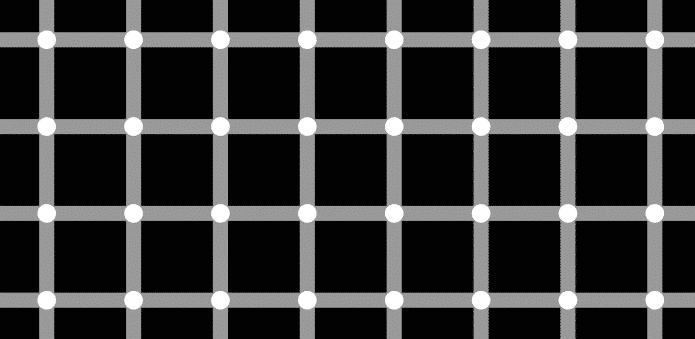This optical illusion tricks your brain into seeing colour
What is an optical illusion? An optical illusion (also called a visual illusion) is characterized by visually perceived images that differ from objective reality. The information gathered by the eye is processed in the brain to give a perception that does not tally with a physical measurement of the stimulus source.
There are three main types: literal optical illusions that create images that are different from the objects that make them, physiological illusions that are the effects of excessive stimulation of a specific type (brightness, colour, size, position, tilt, movement), and cognitive illusions, the result of unconscious inferences.
In this article, we will see how this monochrome castle in the image below illustrates as to just how sophisticated our brains are at viewing the colours we see around us.
The optical illusion strangely works by preparing the receptors in the retina of our eyes so that they can reproduce colour in a back and white image.
In the first photo, when you stare at the dot in the centre, the cells of the eye that see colour become less sensitive and later try to ‘fill’ the monochrome scene with missing colours.
Check out the optical illusion in action in a video below.
This is how it works. You need to stare at the dot in the centre of the false-colour image for around 30 seconds.
This makes the cone cells in the retina, each of which identify either green, red, or blue light, to ‘become tired of and ignore’ the colours being stared at.
When the monochrome scene is restored, the remaining cone cells that are in charge of identifying other colours than the ones being staring at ‘fill in’ the scene.
In other words, the false-colour image acts like a kind of ‘negative’ for the scene.
As a part of her series about colour for the BBC, Dr Helen Czerski, a physicist at University College London, disclosed the illusion using a picture of Dunstanburgh Castle.
She said: ‘By staring at the dot in the middle of the screen, my brain, and if you do it your brain, is doing something remarkable.
‘I find this absolutely fascinating.
‘In my head a full colour image was created of a photograph that clearly contains no colour.’
The trick works due to an effect known as ‘afterimage’. An afterimage is a non-specific term that refers to an image continuing to appear in one’s vision after the exposure to the original image has ceased.
This is where overexposure to a given colour causes the retina to become tired of that colour and makes the cone cells less sensitive to it for a short period.
When the eye is exposed to a black and white image under white light after the colour stimulus is removed, then the complementary colour is seen for a brief period of time.
As part of BBC Four’s Colour: The Spectrum of Science, Dr Czerski illustrated the illusion to try and explain that how our brains become confused due to the way it often interprets colour.
She said that a good example of the optical illusion was the recent internet sensation caused by the white and gold dress, which was seen by some as blue and black.
She said: ‘As we were making the series, I asked members of the public for their questions relating to colour, and I’ve answered some of the most popular ones here.
‘One question stood about among the rest because it was asked again and again. People really care about it.
‘The question is: “Is the colour you see the same as the colour I see?”
‘I think that the reason people asked is because they want reassurance: colour is so important to us that it’s vital it’s the same for everyone.
‘Otherwise, how do I know that my interpretation is right or whether it means anything at all?
‘Surely a red apple is red, and that’s the end of it. But how do you check? And then along came The Dress.
‘It turned out that people don’t always interpret the world in the same way and it made such huge social media waves because it seemed so unbelievable.’

